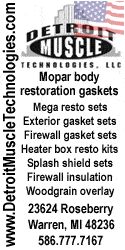With most of the underside of the chassis fabrication done, it was a good time to weld the seams where the new floor pans met the old ones.
View attachment 1716100348
Next up, approximate seating position, which determines critical placement of specific roll cage bars.
I quickly fabbed up some temporary seat mounts and determined where the seats needed to be. I should mention here that I was also planning to move the centerline of the engine, trans and driveshaft to the center of the car, instead of the 2.75" right of center where they were from the factory. This turned out to be a bigger deal than I anticipated as the build progressed. More on that later.
Here's a pic of the drivers seat mocked up.
View attachment 1716100358
Now it was time for the roll cage.
I began to look at how and where the main hoop of the roll cage will go. NHRA has specific rules on the location of the main hoop relative to the position of the drivers helmet. That's why I had to get the seats installed before I could proceed with the roll cage work, the location and angle of the main hoop was dependent on where my head was going to be. I made careful measurements, and removed the seat. When I placed the pre-bent hoop from S&W in the car, I noticed that it had been slightly overbent, and the vertical tubes were not parallel. Thanks to my buddy Rick and his Porta-Power, we were able to straighten the main hoop and get it back to fitting perfectly in the car. I was amazed at how much force it took to bend this tubing even a little. This thing is going to be seriously strong.
The NHRA rulebook says that on a unibody car like this, you can mount the roll cage to 0.125" thick, 6" square steel plates, that must be fully formed and perimeter welded to the cars floor pans. While I'm sure that works for many people, when it comes to the structure in the car that might someday save someone's life, I decided to go a step or two further. This is why I made those outrigger connectors from the rockers to the sub-frame connectors. This will make the whole thing super strong, and further tie the frame connectors to the chassis of the car. Then, on top of those steel tubes, I will weld in the 6" square steel plates to the floor pans. The "sandwich" goes like this...
The main hoop bars will be welded to the top of the frame tube, and go through an 1-5/8" hole in the 6" square plate. Then the square plate gets welded to the sheetmetal in the normal way. I used this method on all four spots where plates needed to be welded to the floor pans. This direct connection (see what I did there?) of the roll cage to the frame of the car will be a lot stronger than just connecting it to the floorpans, and it also makes the roll cage part of the cars chassis and stiffens everything. Sort of the "belt and suspenders" method, but there will be no question of how strong the roll bar connection points are.
View attachment 1716100377 Same idea, for the front down bars.
View attachment 1716100378
View attachment 1716100379 Here you can see how the bar goes through the plate, and is welded to the bracing under the car, then gets welded in the typical way to the plate and floor pan.
The dash bar in most cars is in front of the dashboard, where it looks weird and gets in the way. I bent my front down bars so that I could move the dash bar behind the dashboard, where you'll never see it. This was a little tricky, but worth the extra time and trouble in the end.
View attachment 1716100382
View attachment 1716100383
Then, more bars were added in the rear, to triangulate the load from the rear axle and keep everything square and stiff.
View attachment 1716100384
View attachment 1716100385
Later on, I will add the front frame rail supports, and triangulate those to the front down bars as well.
More to come... a lot more. Next up, home made wheel tubs.
I appreciate your comments, and critiques as I continue this thread. Too many photos? Not enough text? Let me know. So far we have gotten to roughly mid 2019.
Garry





















